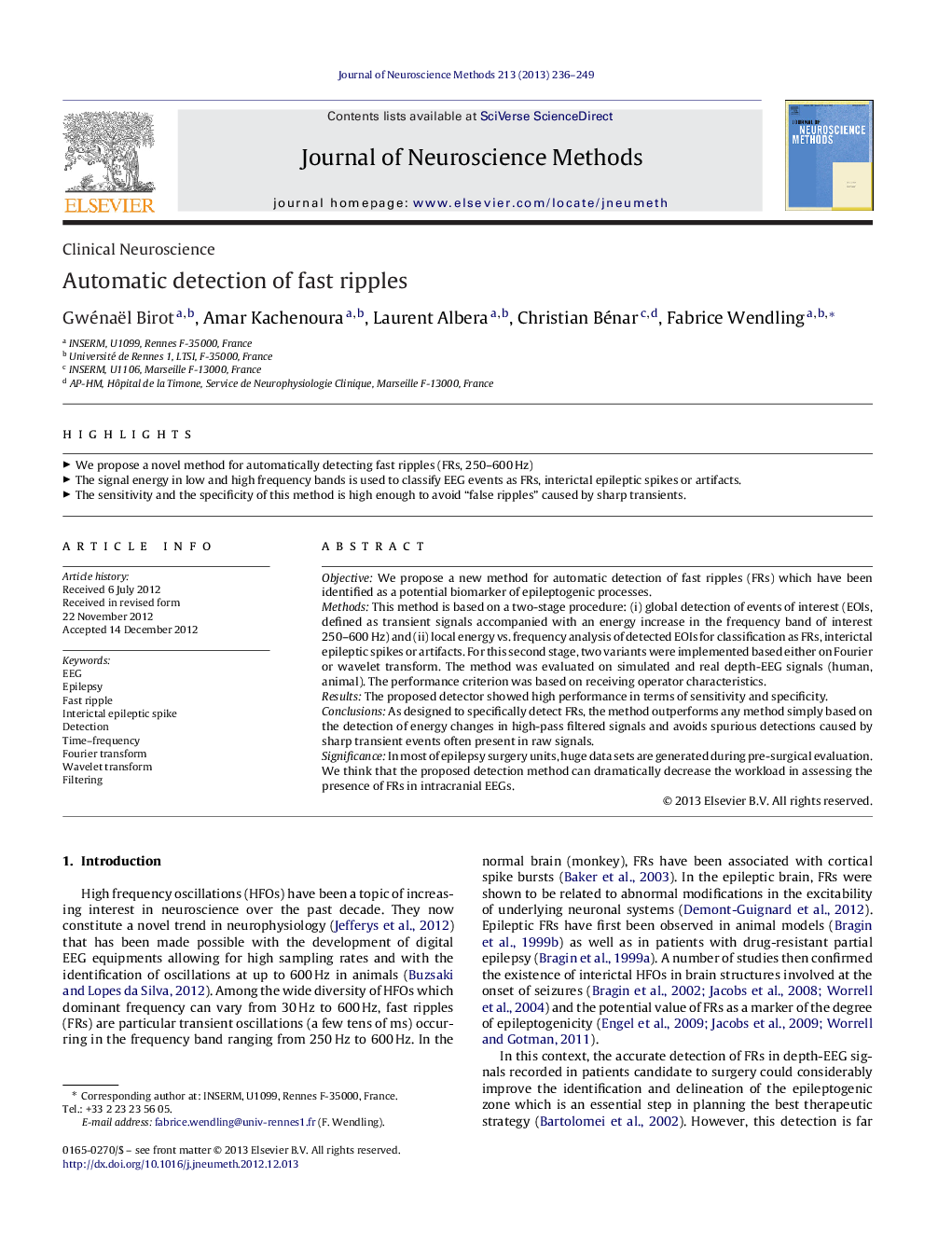| Article ID | Journal | Published Year | Pages | File Type |
|---|---|---|---|---|
| 6269010 | Journal of Neuroscience Methods | 2013 | 14 Pages |
ObjectiveWe propose a new method for automatic detection of fast ripples (FRs) which have been identified as a potential biomarker of epileptogenic processes.MethodsThis method is based on a two-stage procedure: (i) global detection of events of interest (EOIs, defined as transient signals accompanied with an energy increase in the frequency band of interest 250-600Â Hz) and (ii) local energy vs. frequency analysis of detected EOIs for classification as FRs, interictal epileptic spikes or artifacts. For this second stage, two variants were implemented based either on Fourier or wavelet transform. The method was evaluated on simulated and real depth-EEG signals (human, animal). The performance criterion was based on receiving operator characteristics.ResultsThe proposed detector showed high performance in terms of sensitivity and specificity.ConclusionsAs designed to specifically detect FRs, the method outperforms any method simply based on the detection of energy changes in high-pass filtered signals and avoids spurious detections caused by sharp transient events often present in raw signals.SignificanceIn most of epilepsy surgery units, huge data sets are generated during pre-surgical evaluation. We think that the proposed detection method can dramatically decrease the workload in assessing the presence of FRs in intracranial EEGs.
⺠We propose a novel method for automatically detecting fast ripples (FRs, 250-600 Hz) ⺠The signal energy in low and high frequency bands is used to classify EEG events as FRs, interictal epileptic spikes or artifacts. ⺠The sensitivity and the specificity of this method is high enough to avoid “false ripples” caused by sharp transients.
